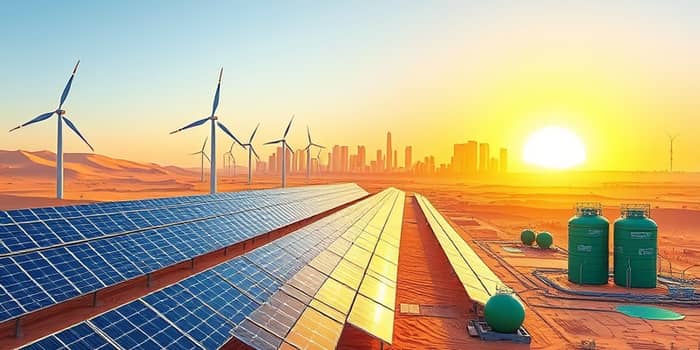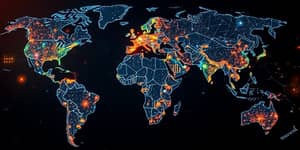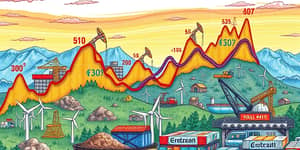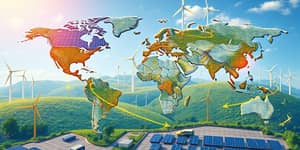
The Middle East, historically synonymous with oil and gas, is undergoing a profound energy revolution. Governments, investors, and communities are embracing large-scale clean energy solutions to diversify economic foundations, strengthen climate resilience, and align with global decarbonization goals. National agendas such as the UAE’s Net-Zero 2050 and Saudi Vision 2030 have propelled the region to become the fastest-growing renewable market outside of China. With policies, technology, and capital converging, Middle Eastern nations are charting a path toward a sustainable future that balances economic prosperity with environmental stewardship.
At the heart of this shift lies a recognition that reliance on a single revenue source is inherently risky. Volatile oil prices, geopolitical uncertainties, and growing international pressure to curb emissions have prompted Middle Eastern countries to accelerate their renewable energy agendas. By diversifying the energy mix, these nations aim to secure long-term economic stability, foster innovation, and unlock new avenues for growth in emerging sectors such as green hydrogen and energy storage.
International climate commitments, notably the Paris Agreement, have further incentivized action. Governments are now deploying financial tools—subsidies, tax incentives, and feed-in tariffs—to catalyze both public and private investment. The result is a surge in announcements for solar parks, wind farms, and integrated renewable hubs that not only bolster power capacity but also create local job opportunities and stimulate broader industrial development.
Certain countries are emerging as regional trailblazers. The United Arab Emirates, led by Masdar, has charted a course to invest AED 200 billion in sustainable energy infrastructure. This expansive strategy encompasses multi-gigawatt solar installations and large-scale battery storage facilities designed to ensure a reliable around-the-clock electricity supply. The UAE’s focus extends beyond power: ambitious plans for green hydrogen production and technological collaboration signal its vision to become a global clean energy hub.
Saudi Arabia is no less determined. With a target of sourcing 50% of its electricity from renewables by 2030, the kingdom has set its sights on deploying 130 GW of solar and wind capacity. Complementing these efforts are major investments in green and blue hydrogen, carbon capture utilization and storage (CCUS) projects, and initiatives to optimize its vast oil infrastructure for low-carbon applications.
The technological landscape is rapidly evolving, driving down costs and enhancing efficiency across all renewable sectors. Solar photovoltaics now represent the backbone of new capacity additions, with utility-scale projects benefiting from record-low levelized costs of electricity (LCOE). Wind energy, especially in coastal and desert regions, is following a similar trajectory. Meanwhile, breakthroughs in energy storage and microgrid technology are smoothing out intermittency challenges, making distributed energy systems more viable than ever.
Despite the unprecedented momentum, several obstacles persist. Fossil fuels still command approximately 80% of total energy investments, reflecting decades of entrenched infrastructure and market dynamics. This imbalance means that renewables must compete not only on cost but also on policy support and regulatory clarity. In many cases, grid integration challenges, supply chain limitations, and nascent hydrogen export facilities are bottlenecks that require coordinated efforts to resolve.
Moreover, supporting sectors such as electric vehicles and large-scale energy storage lag behind global leaders. Policymakers and industry stakeholders must prioritize comprehensive frameworks that encourage technology transfer, skill development, and local manufacturing. Only through a holistic approach can the region fully harness the potential of green energy, mitigate economic risks, and ensure that benefits are distributed equitably across society.
Looking ahead, the Middle East stands at the cusp of a transformative era. Sustained policy momentum and cost declines will likely drive renewables to account for 26% of total primary energy supply by 2050, with the power sector potentially exceeding 50% penetration. Green hydrogen is poised to evolve from niche to mainstream, positioning the region as a key exporter to Europe and Asia. If current trajectories hold, emissions could be slashed by over 1 GtCO2 annually by mid-century, shifting the narrative from oil dependency to clean energy leadership.
For businesses and communities, the imperative is clear: embrace innovation, invest in skills and infrastructure, and forge public-private partnerships that scale solutions quickly. Local entrepreneurs can capitalize on emerging value chains, from solar panel manufacturing to hydrogen logistics. International investors will find attractive opportunities in a market characterized by strong policy backing and high growth rates. Above all, fostering an inclusive energy transition—where benefits reach all segments of society—will be the ultimate measure of success.
The story of the Middle East’s renewable revolution is one of ambition, collaboration, and resilience. It reminds us that even the most oil-rich regions can reinvent themselves when vision and determination converge. By aligning government initiatives, corporate strategies, and community engagement around a shared purpose, the region can build a sustainable and prosperous future for generations to come.
Let this narrative serve as a call to action for stakeholders worldwide: invest boldly, innovate relentlessly, and work together to turn the promise of renewable energy into lasting reality. The journey is challenging, but the rewards—in environmental health, economic diversification, and social well-being—are within reach. The Middle East is repositioning around renewables; now is the time to join the movement.
References













